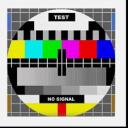Yahoo Answers is shutting down on May 4th, 2021 (Eastern Time) and the Yahoo Answers website is now in read-only mode. There will be no changes to other Yahoo properties or services, or your Yahoo account. You can find more information about the Yahoo Answers shutdown and how to download your data on this help page.
Twin planets in the same orbit around the sun?
There is a common theme in science fiction of two planets in the same orbit around the sun. Each hidden from one another. Has a phenomenon like this ever been discovered? Is it possible? If, as, in so many science fiction devices, there was such a planet orbiting our sun, at what point in history would we have detected it? I would think that even if we couldn't observe it visually, it's presence could be inferred from it's gravity. I'm watching MSTK3000's version of stranded in space, and it made me curious.
3 Answers
- DLMLv 77 years agoFavorite Answer
Here's what you want to know about:
http://en.wikipedia.org/wiki/Lagrangian_point
L3 is the point of interest in your question.
These points are only stable if one of the orbiting bodies is significantly smaller in mass than the other (and the centrally orbited body). Because orbits are elliptical, it would 'peek out' from behind the Sun or star around perihelion and aphelion for the observer on either planet (both planets have to follow the same orbit, so they would not experience perihelion and aphelion at the same time... since orbital velocity varies with distance, the far side object would reveal itself from time to time).
If there are other nearby planets in orbit, the tiny gravitational perturbations do add up, and point L3 becomes unstable. A planet sized object at the Earth-Sun L3 would not stay there for more than a couple years max, as every time Venus was at inferior conjunction to the smaller body, it perturbs its orbit enough.
In science fiction, the planet *could* exist if both it and the larger planet had orbital eccentricities very close to zero (perfect circle) and there were no other massive bodies in the planetary system... unlikely to happen naturally. Again, the two planets would have to differ greatly in mass, say... something four times the mass of the Earth and something about the mass of the Moon. Even then, it is doubtful the system would remain stable for the long term.
- John WLv 77 years ago
That's been in science fiction often such as the 1969 movie "Doppelgänger" which is more commonly known to North Americans as "Journey to the Far Side of the Sun". What really kills me about the movie is they launch from Earth in a multi-stage Saturn V type booster, land on the duplicate Earth in a space plane shuttle then escape the duplicate Earth in the same shuttle but without a booster...
However, such an orbit would be at a LaGrangian point and hence would be unstable. The last proto-planet in a LaGrangian point around Earth was Theia and it crashed into Earth melting both planets and spinning off the Moon.
- QuadrillianLv 77 years ago
Now, somehow it does not surprise me that this is a "common theme in science fiction".. Physically impossible, but makes for a good story. yep, that's sci-fi.
But seriously, a planetary system is a many-body problem. These are invariably unstable. The only question is the timescale. Think of a set of linked pendulums.
I gues that "we" (meaning the Earth) would have detected such a planet around three billion years before the first complex organisms emerged from the mud. When your slimey early ancestors were beginning to coagulate out of the Earth's primitive oceans, there would have been a violent and catastrophic encounter that would have done to the Earth what the Kepler mission tells us happens to all other planetary systems.
Ever heard of perturbations, tidal effects, orbital resonance? No? Then I suggest that you at least look up these terms in wiki. That way you will be head and shoulders above most sci-fi authors.
Cheers!


